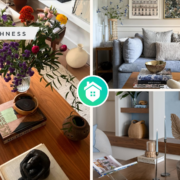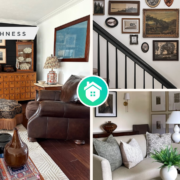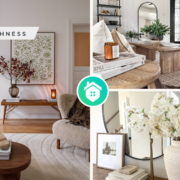Every homeowner understands the importance of protecting their home against the elements. Homeowners in all climates should be considering landscaping and exterior design ideas that ensure both aesthetics and protection from harsh weather. These 6 steps will help you create an excellent exterior design for your home.
Step 1: Consider The Style Of Design
When it comes to the style of design, there are many different options to choose from. For example, you may want a traditional look for your home, or you may prefer a more modern approach. You’ll also need to consider the overall theme of your home’s exterior design. For instance, if you live in a rural area, you may want to go for a country look. On the other hand, if you live in an urban area, you might want a more contemporary style.
Step 2: Understand The Landscape
There are a few key things to keep in mind when considering the landscape of your home’s exterior design. First, take into account the size and shape of your lot. If you have a small lot, you’ll want to be careful not to overcrowd it with too many features. Second, think about the climate in your area and how that will affect the plants you choose for your landscaping. Choose plants that are native to your area and that can withstand the local climate.
Third, consider the amount of sunlight that hits your property. This will help you determine where to place certain features, like gardens or patio furniture. fourth, take a close look at your home’s existing architecture and try to complement it with your landscaping choices. Fifth, don’t forget about functionality! Make sure there’s enough space for people to walk around comfortably and that any features you include are actually useful.
By following these simple tips, you can create an excellent exterior design for your home that takes into account both form and function.
Step 3: Decide What Materials To Use
Now that you know what style you want and what colors to use, it’s time to decide on the materials you’ll use. This is an important step, as the materials will not only affect the look of your home, but also its durability.
There are a few things to keep in mind when choosing materials:
– climate: certain materials are better suited for certain climates. For example, if you live in an area with extreme weather conditions, you’ll want to choose materials that can withstand those conditions.
– maintenance: some materials require more maintenance than others. If you don’t want to spend a lot of time caring for your home, choose low-maintenance materials.
– budget: obviously, your budget will play a role in your decision. However, don’t sacrifice quality for price – it’s worth spending a little extra on high-quality materials that will last longer and look great.
With these factors in mind, take some time to research different exterior design materials before making your final decision.
Step 4: Create A Site Plan
A site plan is a scaled drawing that shows the location of your home or building in relation to the property lines. It also shows any existing features on the property, such as trees, driveways, and septic tanks. Site plans are used by architects, engineers, and landscape designers to plan projects.
If you’re planning a home exterior design project, you’ll need to create a site plan. This step may seem daunting, but we’ll walk you through it. First, you’ll need to find a topographic map of your property. You can get one from your county assessor’s office or online. Once you have the map, use a ruler or scale to measure the dimensions of your property. Then, use graph paper to draw a scaled version of your property. Be sure to include all existing features, such as trees, driveways, and septic tanks. Finally, mark where you want your home or building to be located on the site plan. With a little planning and effort, creating a site plan is easy!
Step 5: Finalize Your Design

The final step in the process is to complete your design. This includes selecting materials, finishes, and fixtures that best suit your home’s style and your personal preferences. It’s also important to consider the climate in your area when making selections, as certain materials may not be suitable for all regions. Once you’ve finalized your design, be sure to have a professional contractor or builder review it to ensure that everything is up to code and will function as intended.
Step 6: The Finishing Touches
After you have completed the first five steps, it is time for the finishing touches. These final steps will help to ensure that your exterior design is perfect.
First, take a step back and look at your work. Make sure that everything looks balanced and that there are no areas that look out of place. If something does not look right, make the necessary changes.
Next, add any final details that you think will enhance your design. This could include things like planting flowers or adding fixtures to your home.
Lastly, walk around your property and make sure that everything looks how you want it to. Once you are satisfied with your work, you can sit back and enjoy your beautiful exterior design!
Maintenance
It is important to maintain your exterior design in order to keep it looking its best. Keep your roof in good condition to protect your home from the elements. If you have a leaking roof, you need roofing repairs. It is important to have it repaired as soon as possible to avoid further damage to your home.
Regularly clean your gutters and downspouts. Leaves and other debris can clog up your gutters, which can lead to water damage on your roof and fascia.
Inspect your roof for any leaks or damage. Have any necessary repairs made as soon as possible to prevent further damage.
Keep your landscaping healthy and trimmed. Overgrown bushes and trees can damage your home’s siding and trim, so make sure to keep them trimmed back.
Check your home’s paint job every few years and touch up any areas that are starting to show wear. A fresh coat of paint can do wonders for the appearance of your home.
Achieving an excellent exterior design for your home doesn’t have to be complicated or expensive. By following these six simple steps, you can create a beautiful and inviting space that will make all your neighbors jealous. So what are you waiting for? Get started today and see the amazing transformation for yourself!




















